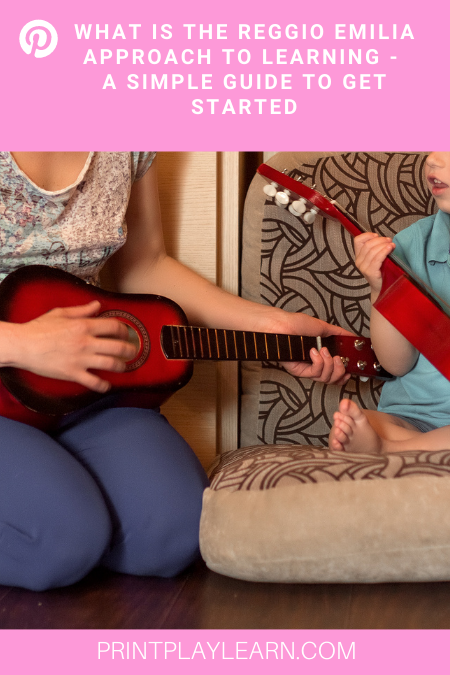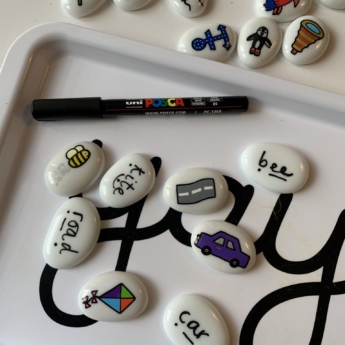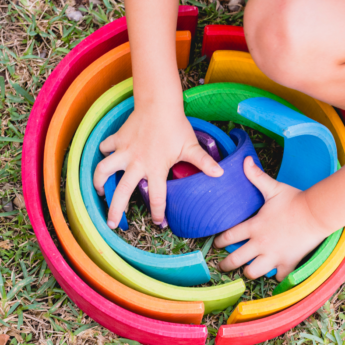Reggio Emilia Approach
The Reggio Emilia Approach is a lesser known approach here in the UK yet has huge potential for our children and is definitely one to consider if you take an expansive view of education. The Reggio Emilia Approach started after the end of World War II by psychologist Loris Malaguzzi and parents in the surrounding area of Reggio Emilia in Italy. Malaguzzi and parents believed that children needed a new and progressive way of learning, realising that children have the potential to learn from everything that surrounds them.
In Reggio, teachers use a range of strategies to expose children to many opportunities and focus on encouraging self-expression, problem-solving, communication and logical thinking. They believe children need plenty of ways to touch, move, listen, and observe, and need control of the direction of their learning! Here’s a look at what that looks like:
An emergent curriculum
Reggio Emilia educators create their curriculum around the interests of their children. Topics are shaped from talking with the kids and their families, as well as topics that are known to be interesting to children at their age. Teachers then plan projects best suited to the children in their classes and encourage parents and the community to get involved too.
Collaboration
As well as getting parents and the community involved in supporting projects, Reggio Emilia considers in class collaboration to be necessary to a child’s development. Groups are encouraged to work together to chat, compare, problem solve, negotiation and build interpersonal skills. Hearing every child’s voice is promoting to everyone a sense of being seen, heard, and valued.
In-depth projects
Projects can last anywhere from 1-2 weeks or a whole school year! Teachers act as advisors, letting the children take the lead yet helping them to decide which direction to take things and work out what materials will be needed to carry out their aims.
Multiple forms of expression
Reggio Emilia considers Howard Gardner’s concept of ‘multiple intelligences’ and puts importance on presenting ideas and concepts in multiple forms. This might include art, written work, theatrical pieces, music, puppetry, and anything else the children can come up with!
Originator Loris Malaguzzi described children as having 100 languages – 100 different ways they can express, play, explore, learn and communicate. The Reggio Emilia gives space for children to realise this and helps all children to understand and connect with the concepts they explore whatever their strengths and interests.
Teachers and kids learning together
In Reggio Emilia, teachers and pupils play a dual role – learning alongside each other and discussing their experiences. The teacher is a resource and a guide, while also tracking the growth of the children in their classroom. They are encouraged to always be reflecting on what they have learned about themselves and their teaching, just as the children reflect on what they learn.
The ‘third teacher’
In Reggio schools, the classroom is often referred to as the ‘third teacher’. Reflecting what an impact a learning environment can have on a child! Like with the Montessori approach, a lot of care is taken into setting up an appealing learning space that encourages exploration and curiosity. Homely items like crockery, tablecloths, plants and even pets can be used to make the classroom feel comforting and homelike.
Documenting learning the Reggio way
Documenting the progress of both child and teacher is a key feature too. Photos of learning in action, along with dictations, help parents and teachers keep track of the experiences children are having and how they help their growth. It also helps teachers keep note of what works for each individual child so they can tailor things as needed.
How to set up your learning environment for Reggio Emilia learning
- Organise your home / classroom so children can thoughtfully pick materials to suit their projects
- Focus on creating ‘adventures’ in learning with plenty of time to expand on ideas and experiment with different approaches
- Get ready to document your child’s progress in lots of different ways to capture their ideas from different perspectives. For example, video diaries, photographs, portfolios and voice recordings
What do you think of this style of learning? Does it sound like something you’d like to apply? Head to the Print Play Learn blog to find out more about other learning approaches for your child or classroom.


